06 Aug Earthen Kinship: Tradition, Technique and Togetherness in Clay
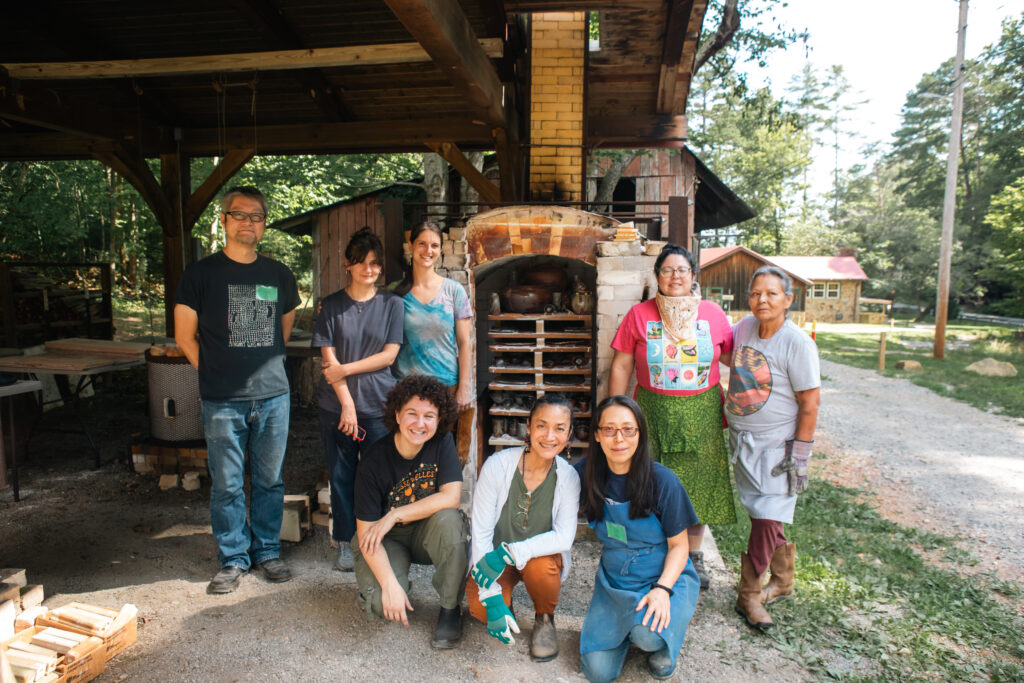
Proud potters of “Wild Clay: Process and Place,” stand proudly in front of the kiln, still hot from the firing.
From left to right: (standing) Instructor Takuro Shibata, Irine Jibuti, Bonnie Claxton, Noelle Zambrano, Betty Maney, (kneeling) Aslan Freidline, Jennifer Hagedorn, and Instructor Hitomi Shibata.
Deep within the earth, formed by cold, stone-weathering waters, a thick layer of potential awaits discovery: natural clay. In tones of burnt orange and storm cloud gray, a plethora of unrefined wet sediment lay just beyond thickets of laurel and rhododendron. Traversing past Brasstown Creek, toting shovels and 5-gallon buckets, Hitomi and Takuro Shibata begin their session “Wild Clay: Process and Place” with an outside excursion, bringing some Earth back with them to the studio.
As part of the Folk School’s Traditional Craft Mentorship Program, this tuition-free workshop pairs students with expert mentors over the course of two weeks. This Summer, Hitomi and Takuro Shibata lead students in a deep dive into refining natural clay while sharing their knowledge of Japanese-style pottery making.
“Making clay is very important nowadays. Since the pandemic and inflation, some ceramic materials disappeared from the market or suddenly shut down and are no longer accessible. So, we potters saw lots of chaotic and unfair material monopolies,” Hitomi said. “We potters who care about clay, we don’t have to deal with them. We just make our own and use local resources to make pots, so this class was made for that study.”
Since traveling to the United States two decades ago, the Shibata’s have immersed themselves in their craft living in Seagrove, North Carolina. Amid the area’s strong, rich community of potters, the pair established Studio Touya, specializing in handmade, wood fired pottery using naturally sourced clay.
Following their foraging, buckets of unrefined clay are sifted and sieved until smooth and absolved of impurities. Roots and rocks erupt from the mass of mud, burgundy silt coating hands with chalky redness.
“After firing the test tiles, we check length and calculate shrinkage. We also put them into hot water, boil, and wait for several hours, then we check water absorption. So, from this shrinkage and water absorption test, we can find out if this clay is good for tableware or maybe tiles, or big jars,” Hitomi said.
An assemblage of clay tests spreads out across tables and shelves. Long, rectangular tiles of auburn and ashen tones are marked with measurements next to tall stacks of biscuit-like samples labeled with numbers between their ruffled edges.
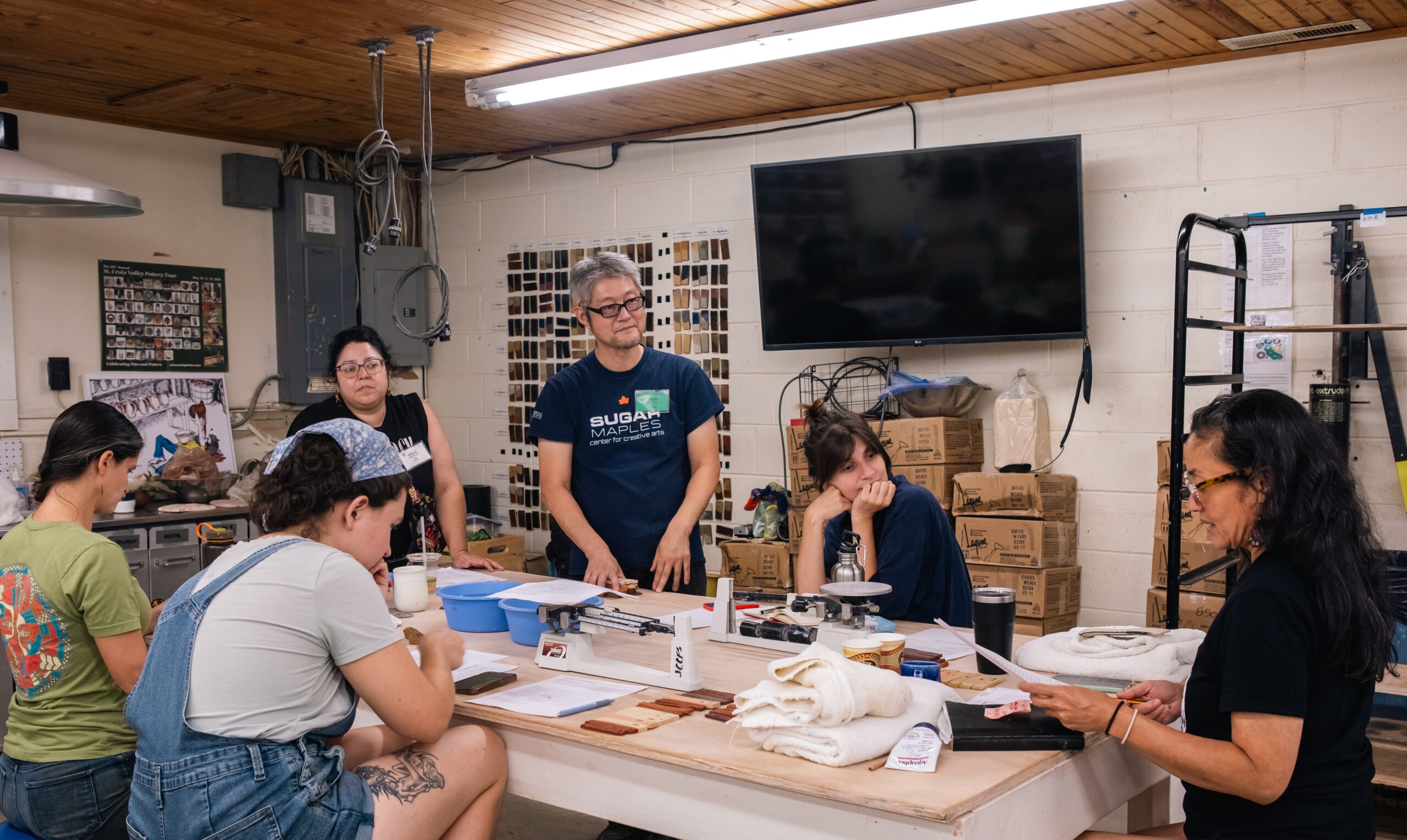
In the clay studio, connections are made as ideas guide the hands of potters, debriefing their findings and asking questions along the way. Takuro Shibata leads the class with generous instruction.
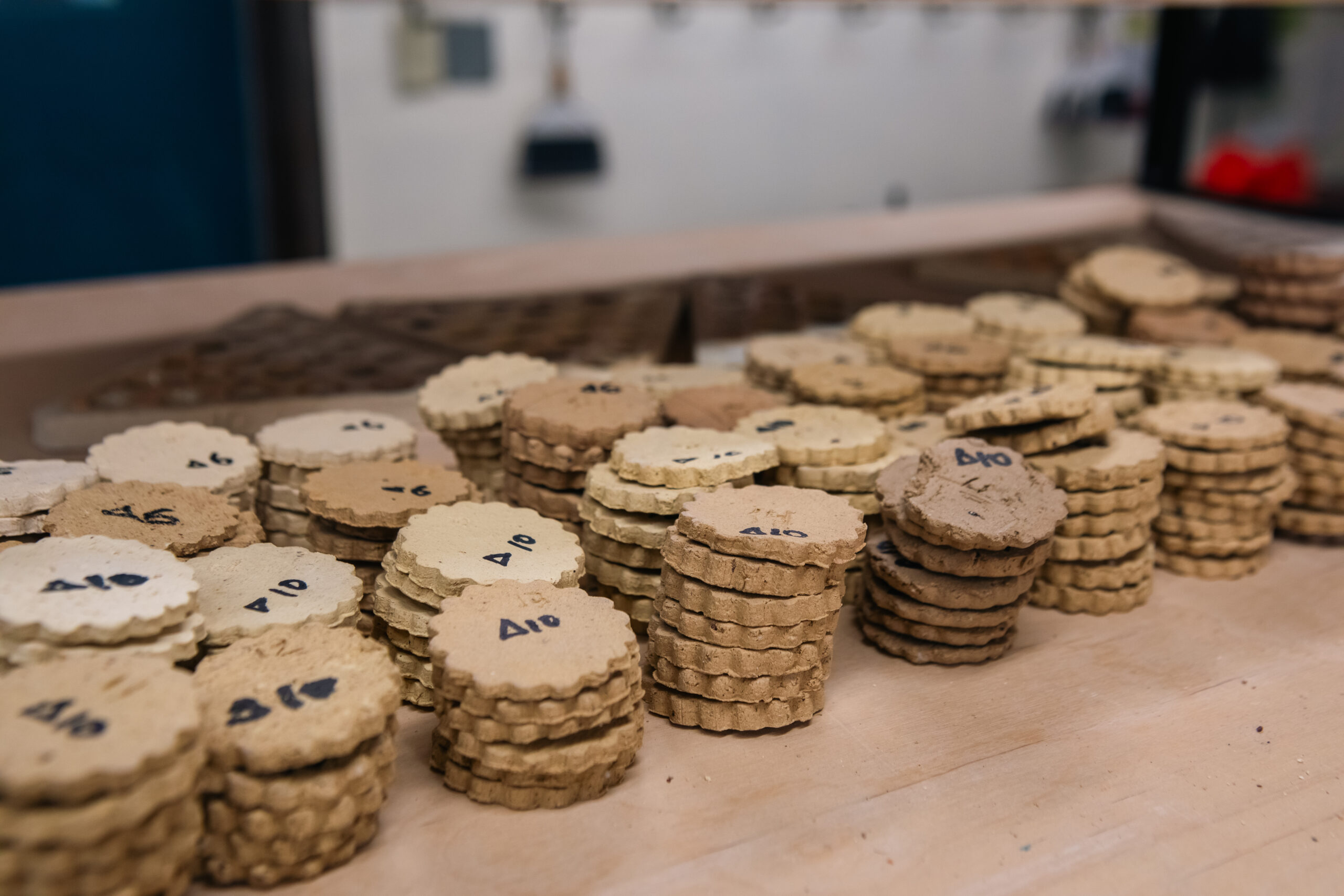
Stacks of clay test “biscuits” in the clay studio, they are labeled and made for analysis of shrinkage and water absorption.
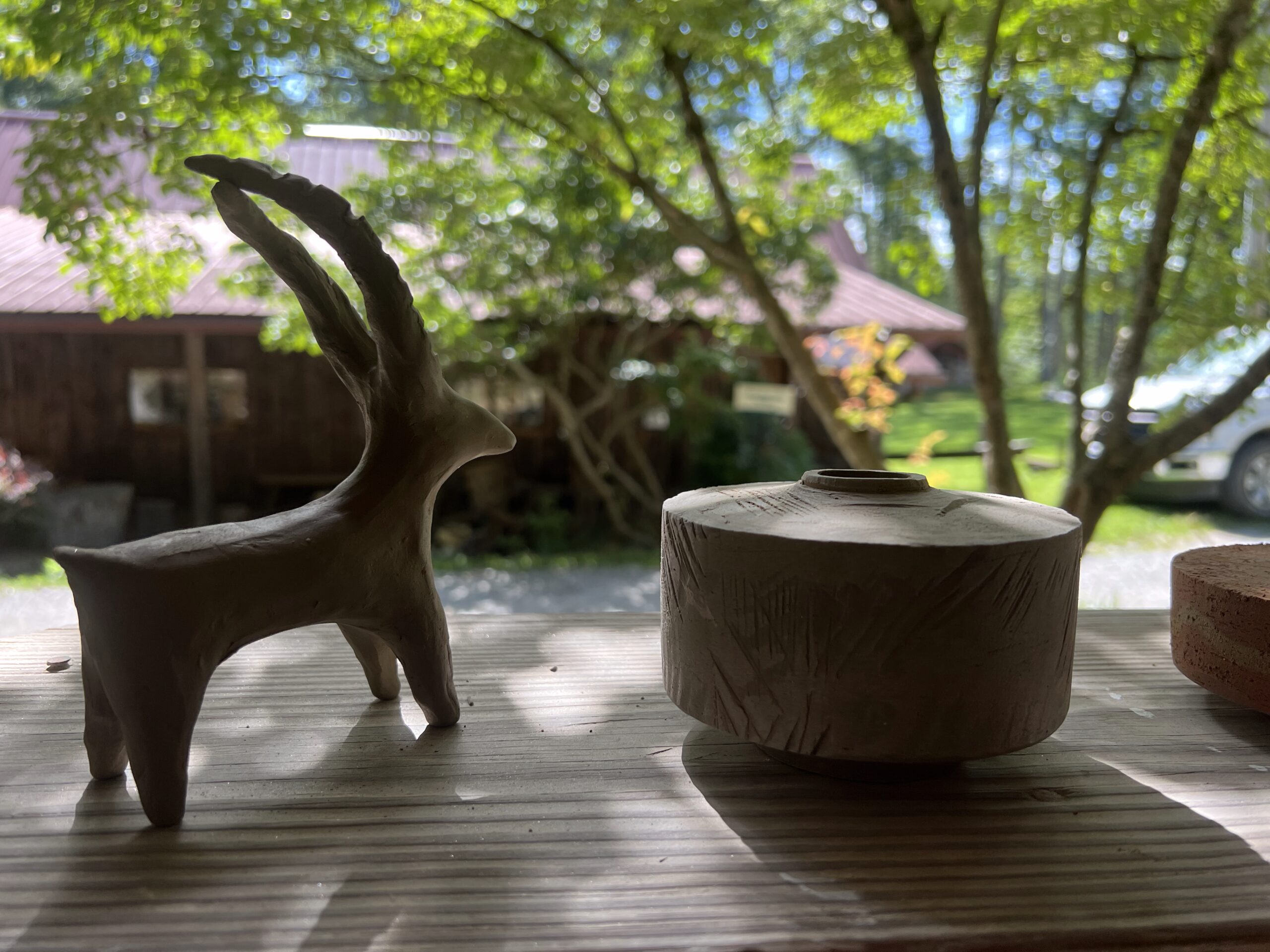
Sculptures and vessels find a temporary home on the drying shelves outside the clay studio, conveniently displayed for passerby to see.
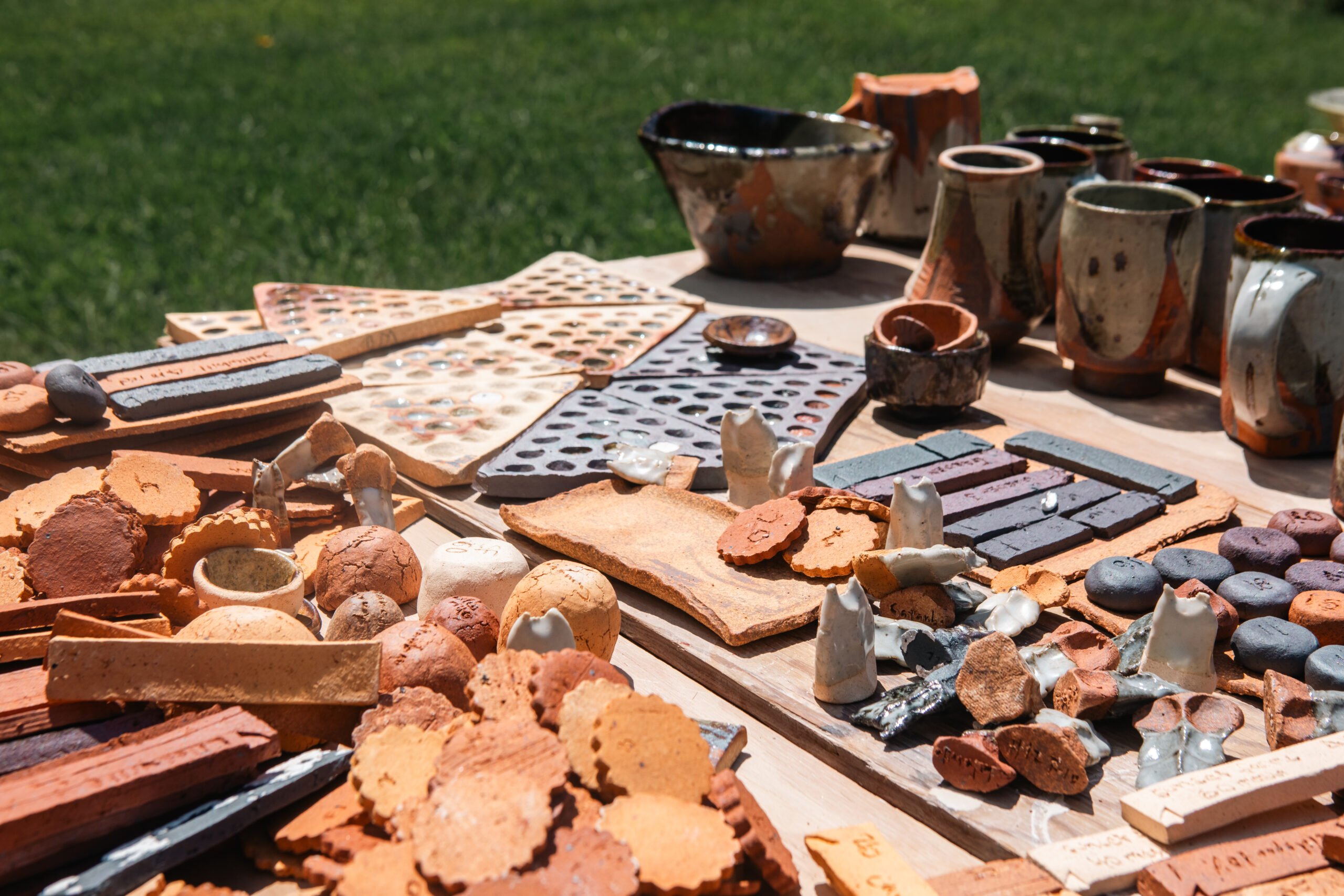
Freshly fired clay tests adorn the table with red and orange.
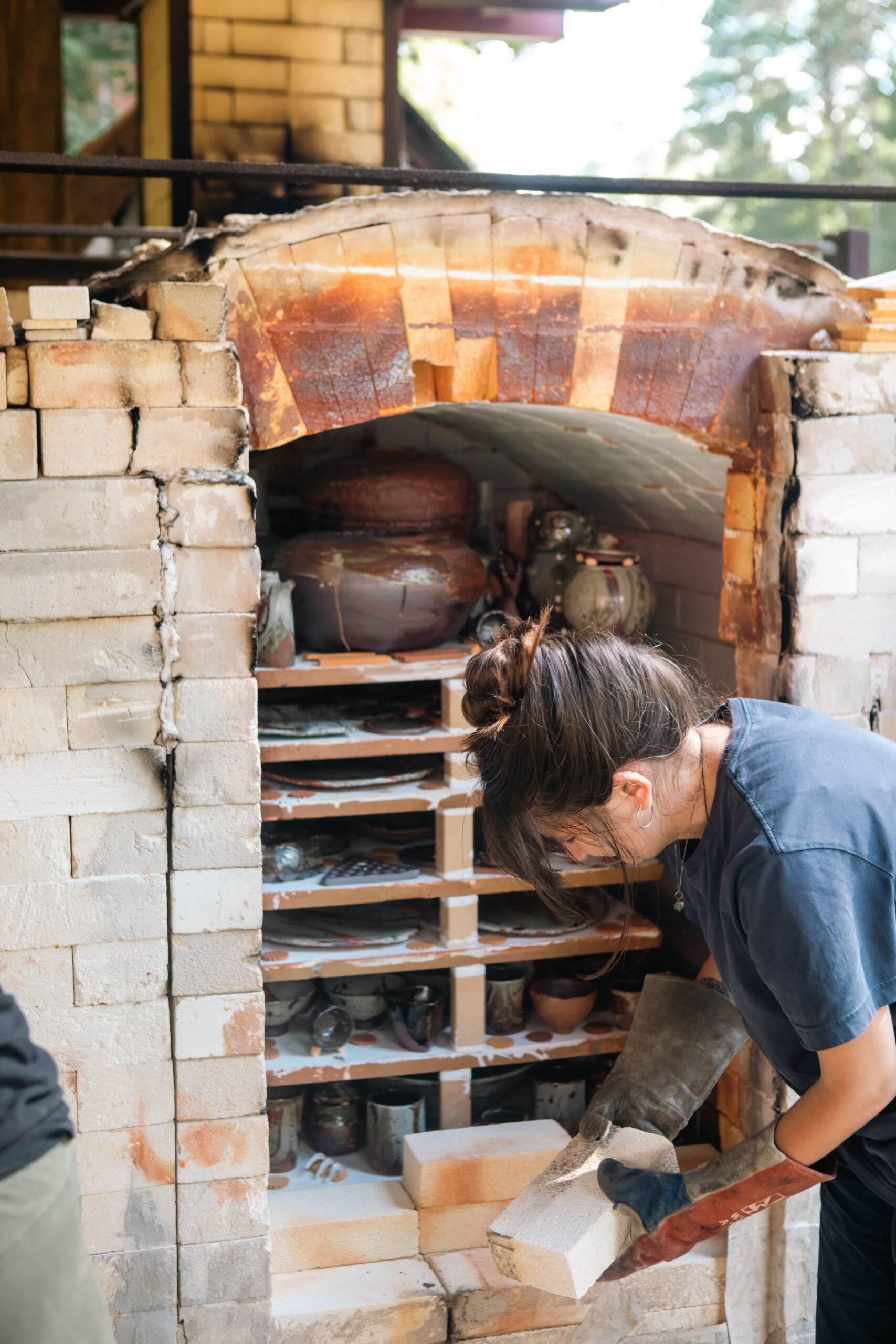
After two weeks of harvesting, hand-building, and throwing at the wheel, the kiln is loaded and fired. Once the contents are cooled enough, gloved hands reach in, delicately removing each piece.
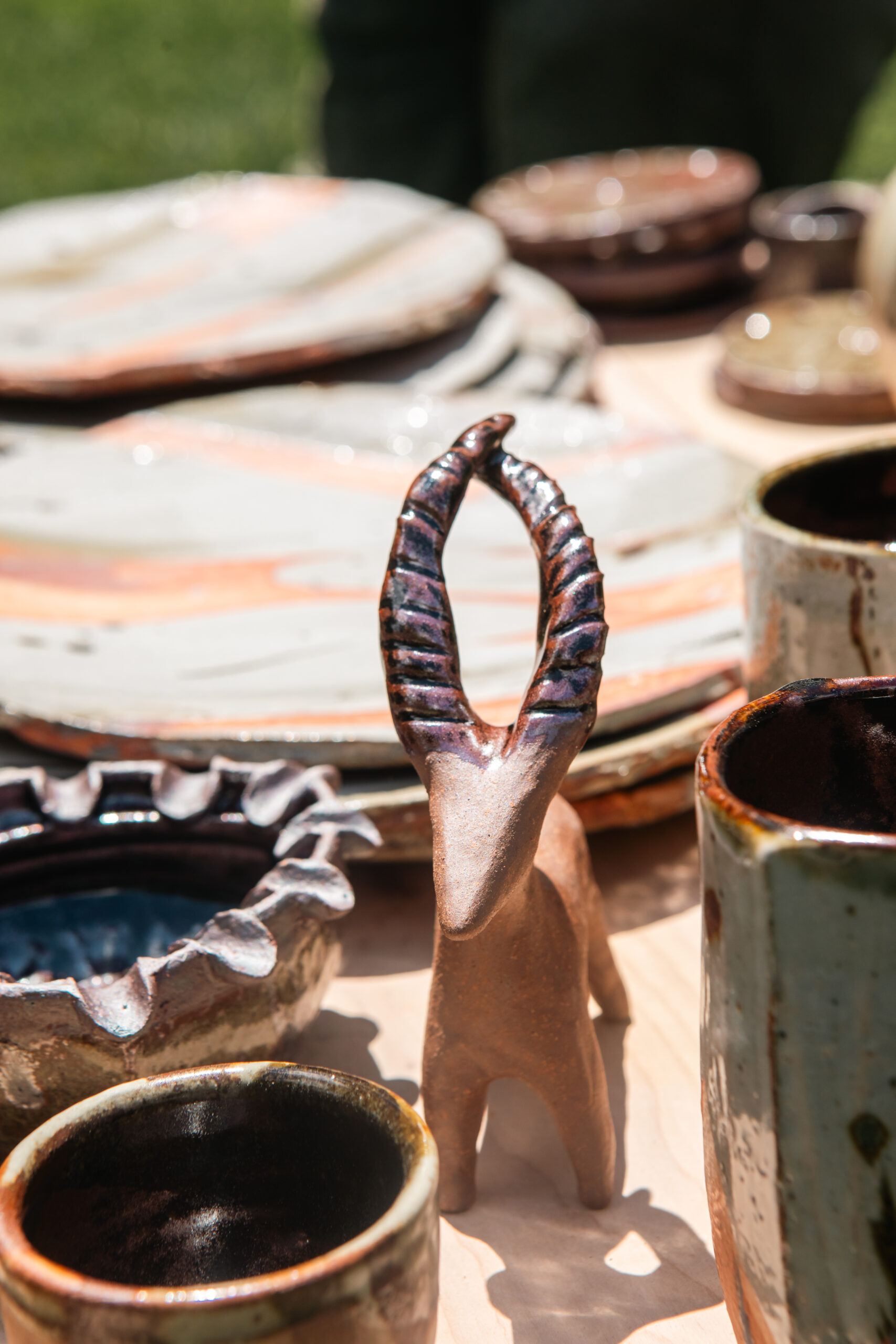
Now fired, the sculptural ram shines under to sun after its removal from the kiln.
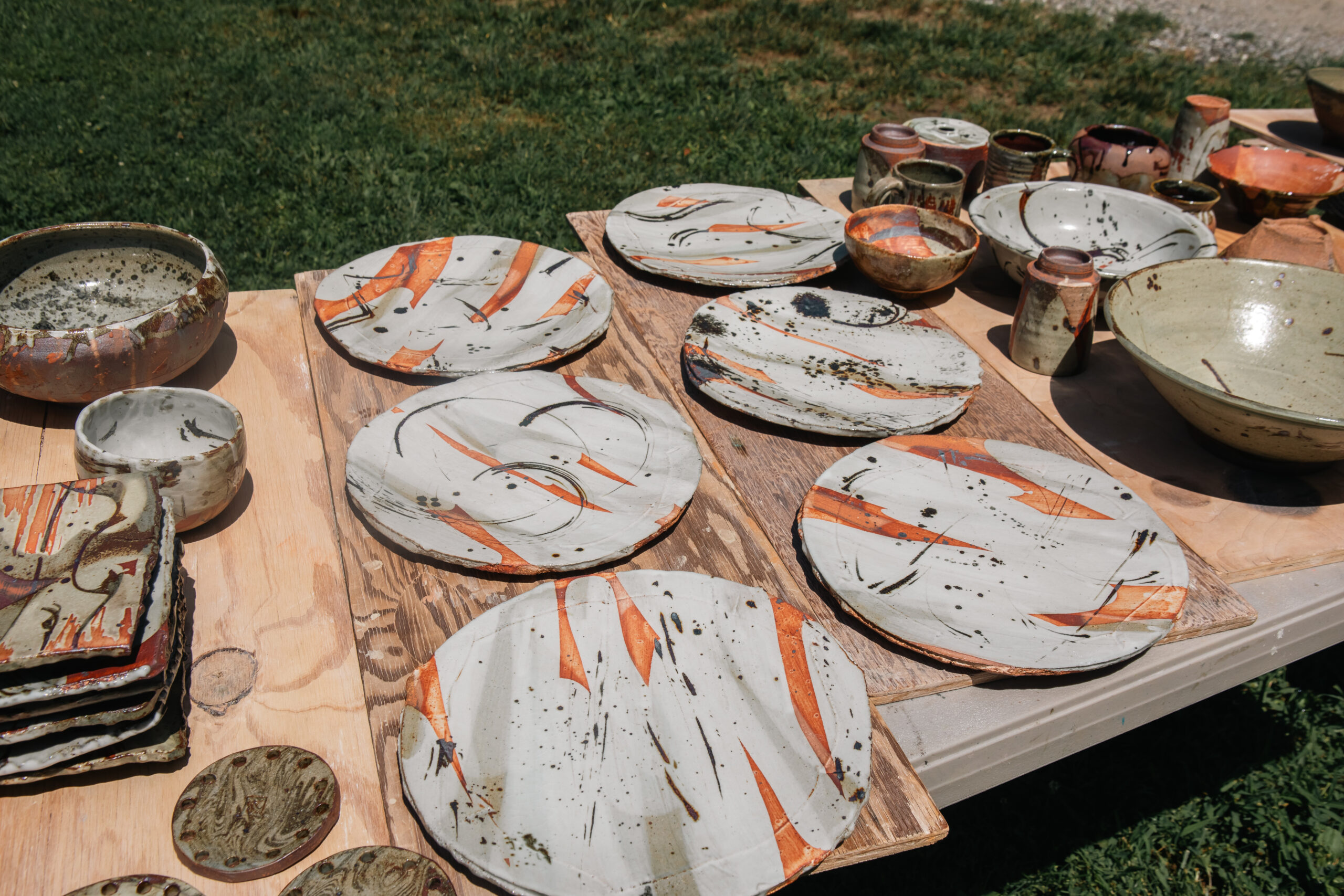
Beautiful plates debut on the cooling shelf, readying themselves for a nourishing dinner rooted in connection, emphasizing their experiences and accomplishments.
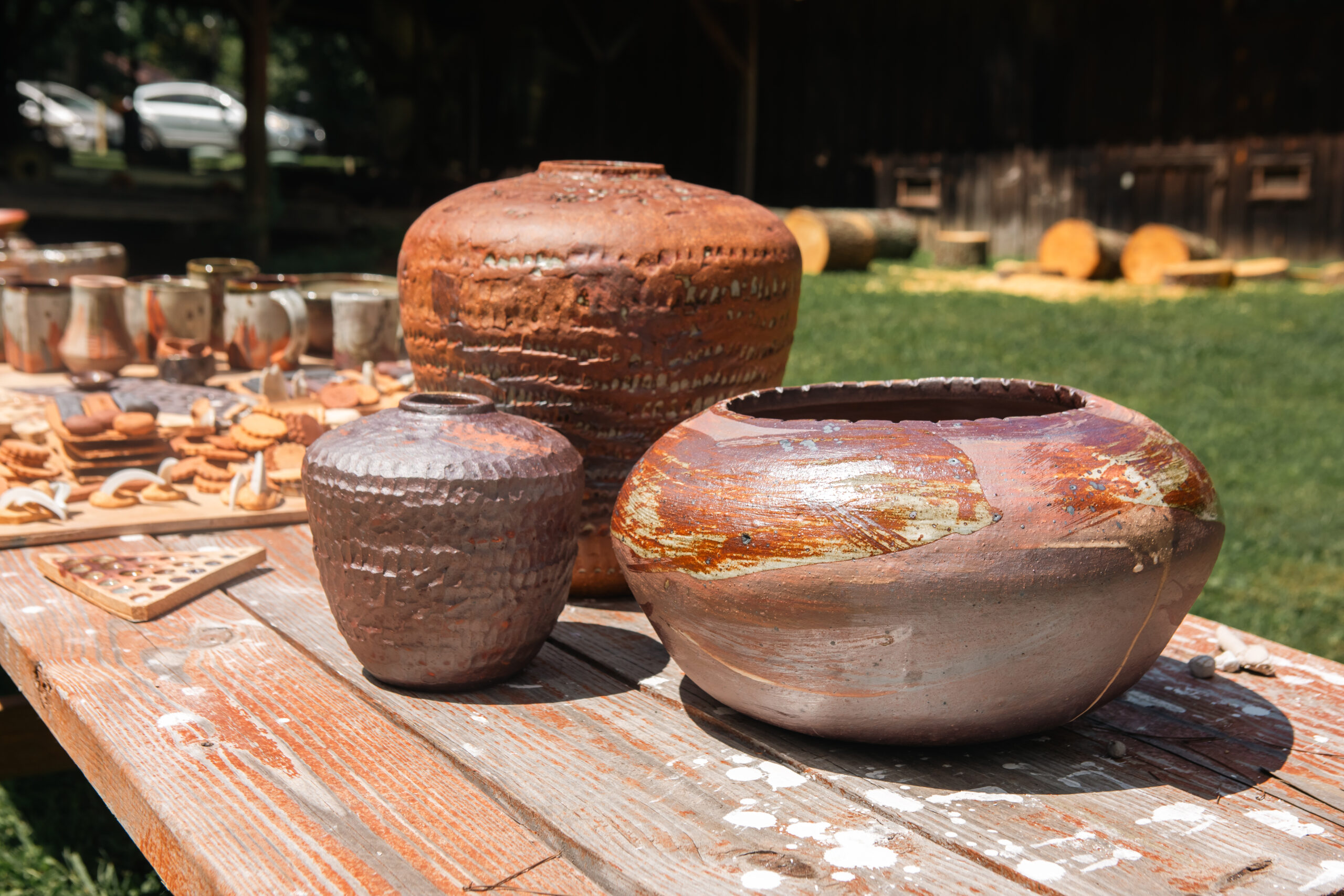
Nearly iridescent under sunlight, Hagedorn’s bulbous hand-built pot is extracted from the kiln, emanating heat off its ceramic hips.
At the corner of the table, hair tied up neatly and poised is an artist from Sylva: Bonnie Claxton, honing her skills and elevating her confidence as tests are fired and conclusions are made.
“I think all of us are really interested in wild clays. For me, the anxiety I’ve had about it or the nervousness has been like, ‘but what if it doesn’t work?’ I can make certain things, but it felt somewhat limiting because I didn’t feel confident in my ability to know how the clay would react in different scenarios. Now, I feel like I’ll be able to do those tests myself at home and I have these resources,” Claxton said.
Sharing knowledge during these two weeks of instruction, the group of artists hold in their slip-covered hands the gift of unwavering dedication and curiosity. Sinking their hands into the clay, a sentiment emerges: throughout the week, the ceramicists will build out a series of plates. At the end of the session, everyone will enjoy dining with their new tableware, sharing a meal and departing with a beautifully symbolic set of ceramics, whispering the delicate reminder that even separate, they are together.
“I knew when I came, I was going to be learning from experts, I was going to learn a lot, but I didn’t know they would be so generous, patient, giving, and true mentors going forward. I have every expectation that the relationships with my classmates will continue and result in beautiful happenings, are that we can’t even imagine yet,” Claxton said.
Students wedge lumps of clay into conical shapes upon sediment covered tables to be thrown on the wheel. Donning a mauve pink apron and red beaded earrings, Jennifer Hagedorn works air pockets out of her hunk of earth with repetitious fervor. She has kind eyes and a smile beaming with compassion.
“I’m originally from the Philippines. I like saying that. I grew up, born and raised there. I immigrated to the US in 2013, but I live in Waynesville, North Carolina right now,” Hagedorn said. “The two weeks so far have been intense and full of information, learning, interaction and connection. It’s really what I came here for, and it’s been beautiful because our mentors are just the most generous, most giving people that I have ever met.”
Clay-coated wheels whir to the command of foot pedals, some students stand at workstations, delicately hand-building vessels of varying sizes. As they complete their pieces, new forms are escorted outside to dry beneath the sun’s golden gleam.
“When I go to the Philippines, the women there still make traditional pots and cook in their in their pots. It’s not so much just living in the past in that sense, but the relevance of tradition now. How do you make it relevant? And how do you bridge that to now is what captures me, and I find very beautiful,” Hagedorn said.
Vessels, sculptures, and tests of clay and glaze evolve from leather hard to bone dry, readying themselves for a smoldering visit to the kiln. The warm scent of bisque and glaze emits from the brick enclosure as the potters begin to gather.
“There’s something very grounding and to me, this practice is spiritual, there’s something about the natural and nature that connects me to a sense of mystery that informs my art.” Hagedorn said.
As the final piece is delicately lifted from the kiln onto the cooling shelf, an astounding assortment of plates, bowls, and sculptures bask in the admiration of their creators. The potters dissipate into the studio with patient anticipation. As their voices carry up the gravel path, amid the near silence of a Mourning dove’s melody, the cooling ceramic offers its gentle song of clicks and pings; each stroke of glaze and brush of slip a story of intention and memory.



No Comments